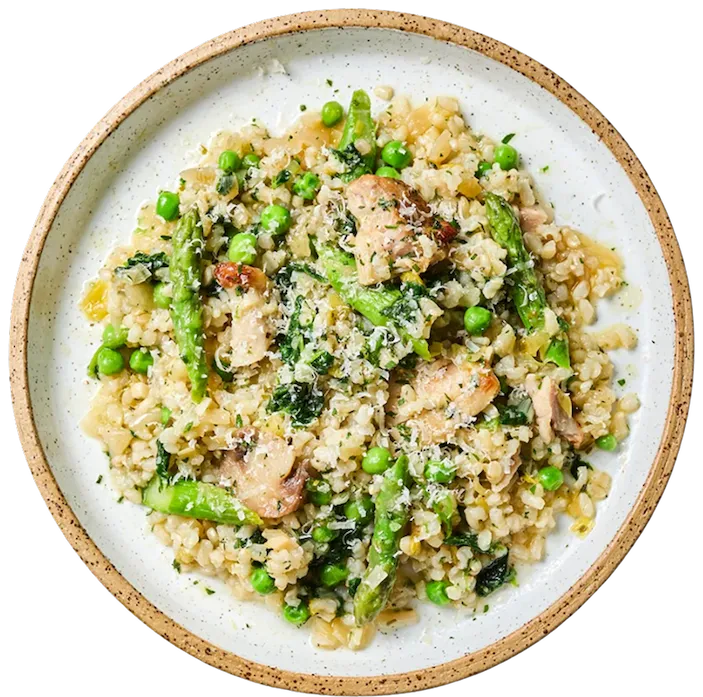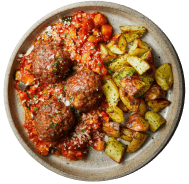What Are Ultra Processed Foods (UPFs)?
Should I Avoid UPFs?
Ultra processed foods are currently under the microscope, with questions being raised about how bad they are for our health and for those already dealing with conditions such as IBS and IBD. In this article, we explore what UPFs are, their impact on your health, and how you can continue to enjoy ready meals healthily with Field Doctor.
Ultra-Processed Foods or UPFs – what are they?
Ultra Processed Foods or UPFs are a hot topic at the moment with lots of press coverage (and science) that they are bad for our health. But what are they and what does Field Doctor think?
Alongside coverage of UPFs, there has been some press singling out ready meals as bad, BUT we disagree with this, as not every ready meal is created equal. From day one we set out to make meals that were good for your health, made from whole foods, with maximum plants, without processed or artificial ingredients. So please read on for more info…
What are Ultra Processed Foods / UPFs?
“Ultra-processed foods are formulations of ingredients, mostly of exclusive industrial use, typically created by series of industrial techniques and processes (hence ‘ultra-processed’).
Processes enabling the manufacture of ultra-processed foods involve several steps and different industries. It starts with the fractioning of whole foods into substances including sugars, oils and fats, proteins, starches and fibre. These substances are often obtained from a few high-yield plant foods (such as corn, wheat, soya, cane or beet) and from puréeing or grinding animal carcasses, usually from intensive livestock farming.
Some of these substances are then submitted to hydrolysis, or hydrogenation, or other chemical modifications. Subsequent processes involve the assembly of unmodified and modified food substances with little if any whole food using industrial techniques such as extrusion, moulding and pre-frying. Colours, flavours, emulsifiers and other additives are frequently added to make the final product palatable or hyper-palatable”
A good rule of thumb is if the food is high in sugar, saturated fat and salt and contains ingredients you wouldn’t usually find in your kitchen or in a cookbook then that food is likely to be a UPF.
What evidence is there that they are bad?
There is growing weight of evidence that UPFs may be bad for your health – with evidence showing their potential role in increased risk of obesity, hypertension and cancer, but there is some nuance in this as some processing can have a positive effect.
Field Doctor mission
At field doctor we support the movement to eat better, avoiding the ultra-processed foods wherever you can, avoiding carbonated drinks, sweets and foods high in fat, salt and sugar. All our meals are designed by a dietitian and made with real food ingredients including dietary fibre, good sources of protein and healthy fats, offering real wholesome nutrition and goodness.
Yes, our meals are processed, but that doesn’t make them unhealthy, in fact we believe the opposite is the case. We use cooking methods in our Somerset kitchen – washing, chopping, heating and freezing to turn fresh whole foods into something that is convenient for you to eat at home when you need it.
We never use artificial flavours, additives, preservatives or hydrogenated fats. We use, for example, red wine vinegar, which contain sulphites and acts as a preservative, and we use chopped tomatoes that contain a bit of naturally occuring citric acid.
All our meals are frozen, which is an amazing natural preservative, and we use a tapioca flour, that is like corn flour, to ensure the meals hold together and don’t become watery, locking in the nutrition.
We use the NOVA classification system, which shows that our tapioca is classed in group 2, and is derived from group 1 foods and by processes such as pressing, refining, grinding, milling, and drying. Also, it is not consumed alone and is used in combination with other ingredients to make palatable, diverse, nourishing and enjoyable meals.
It’s a little bit technical, but you can see the full Nova classification system here
related content
more content: General Health
browse our ranges.
choose from one of our ranges or personalise your own menu from 60+ meals.
- low FODMAP

- eat well, live well programme

- gluten free

- high protein

- weight management

- ibs

- lowest calorie

- lower carbs

- mediterranean

- smaller range

- pcos

- lean + lighter

- menopause

- heart healthy

- plans

- full menu

- gift cards
- take the quiz